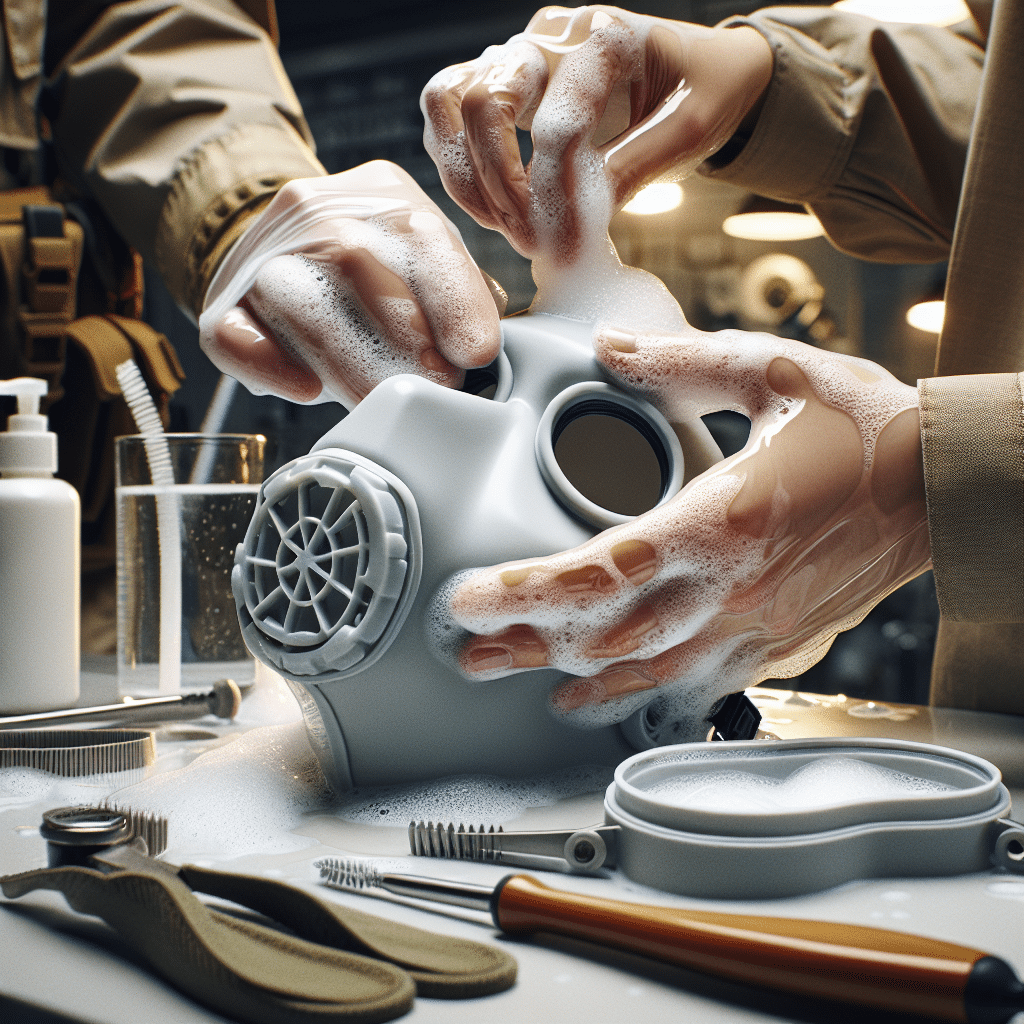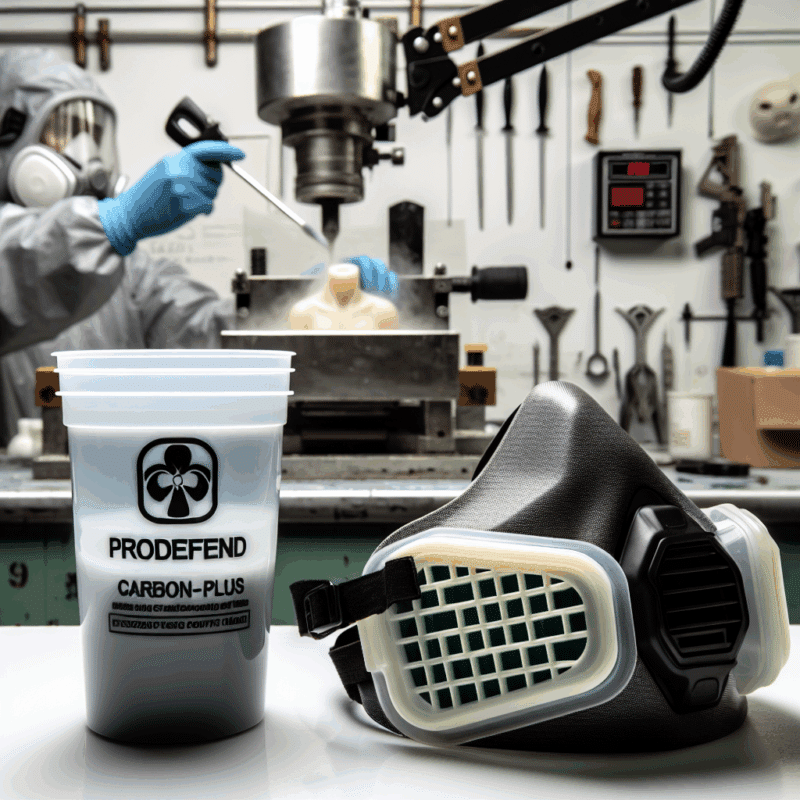CoreMask Cleaning: Washable Face Seal Tips for Extended Use
In This Article
- Clean your CoreMask after each use for optimal safety.
- Use mild, unscented soaps suitable for silicone components.
- Avoid high heat during drying to prevent material warping.
- Check frequently for signs of wear or deformation.
- When in doubt, replace rather than risk compromised protection.
Why Clean Your CoreMask Regularly?
The Health and Safety Benefits
CoreMask cleaning is not merely a matter of hygiene—it’s a critical step in safeguarding your health and maintaining the integrity of your face seal. These masks are designed for repeated use, but without routine cleaning, they can become breeding grounds for bacteria, sweat buildup, and environmental contaminants. If left uncleaned, your mask’s ability to provide a secure seal and effective filtration becomes significantly compromised.

Health authorities globally recommend that all reusable face masks, including CoreMask products, be thoroughly cleaned after each prolonged use. Doing so not only enhances personal protection against viruses and allergens but also ensures that the seal performs as intended. In a professional or industrial setting, where prolonged mask wear is common, proper cleaning may prevent serious respiratory or dermatological issues.
Moreover, regular CoreMask cleaning minimises odours, prevents skin irritation, and reduces the risk of cross-contamination. Especially in occupational environments, this habit can distinguish between safe usage and potentially hazardous exposure to airborne particles. A clean face seal also conveys professionalism and regard for established safety protocols.
Materials Needed for Effective Cleaning
Simple Items You Already Have
You don’t need complex equipment to clean your CoreMask effectively—just a few common household items will suffice. Begin with a soft microfiber cloth or sponge, two clean containers or bowls (one for soapy water, one for rinsing), lukewarm water, and a mild, fragrance-free liquid soap. Avoid anything harsh, as abrasive chemicals can degrade the face seal over time.
A drying rack or lint-free towel is also helpful. You’ll want a stable place for the mask to air-dry safely. For those practising meticulous hygiene, consider wearing disposable gloves during cleaning and drying to avoid reintroducing contaminants. If your mask comes with a removable filter or insert, make sure to consult the manufacturer’s guidelines regarding its care separately.
Gathering and preparing your materials before initiating the CoreMask cleaning process ensures efficiency and prevents recontamination through handling while searching for items mid-process. Having these simple tools on hand enables consistent and gentle upkeep of your reusable equipment.
Step-by-Step CoreMask Cleaning Process
Gentle Yet Thorough Methods
To begin the CoreMask cleaning routine, prepare your workspace on a clean counter. Fill one bowl with warm water (not exceeding 40°C) and a small amount of mild liquid soap. In the second bowl, fill with clean lukewarm water for rinsing purposes.
First, disassemble any removable elements from your CoreMask—such as filters or headbands—if the manufacturer allows. Submerge the face seal component in the soapy water. Using the soft cloth or sponge, gently wipe all internal and external surfaces, including joints and edges where residue may accumulate unnoticed.
Avoid scrubbing aggressively or using any brush with stiff bristles. Once cleaned, transfer the mask into the rinse bowl and ensure all detergent is removed. Multiple rinses may be necessary, particularly if any internal seams retain sudsy residue. Residual soap can cause skin irritation or degrade material elasticity.
Pat the mask dry with a clean towel or place it on a drying rack. Take care not to bend or stress the silicone components, ensuring the shape and fit remain uncompromised. Consistent technique assures long-term seal viability and upholds performance benchmarks.
How Often Should You Wash the Face Seal?
Guidelines for Usage Frequency
The frequency of CoreMask cleaning largely depends on usage patterns. For daily users, a wash after each use is essential—particularly if the mask is worn for more than 30 minutes continuously, or in high-traffic or dusty environments. Sweat, oil, and dirt build up quickly, affecting seal performance and fit.
Occasional users, such as those wearing the mask during commutes or specific activities like painting or woodworking, can perform thorough cleaning after every two or three uses, provided the mask has not been exposed to contaminants. However, a quick surface wipe after each use is still advised to maintain hygiene.
It’s also best practice to inspect the face seal before each use. Any visible grime or loss of elasticity warrants immediate cleaning. Adopting a usage-oriented cleaning schedule rather than a fixed calendar interval ensures cleanliness tailored to actual exposure conditions. Don’t forget to log cleanings in a maintenance record if the CoreMask is used in a regulated workplace environment. For more guidance, consult Learn more about Respirator and Dust Mask Maintenance.
Drying Tips to Preserve the Seal
Avoiding Heat Damage
After CoreMask cleaning, it’s critical to dry the face seal properly. Air drying in a well-ventilated, shaded area is preferred. Direct sunlight should be avoided. Prolonged exposure to UV rays can cause silicone degradation, shortening the seal’s lifespan.
Never use mechanical dryers, hairdryers, or place the mask on or near radiators. High heat may warp the shape and compromise the mask’s snug fit. Similarly, avoid hanging the seal with clips that could press into the material, leaving permanent indentations.
The safest method is to lay the mask flat on a clean towel, rotating it halfway through to promote even drying. If speed is essential, a dehumidified room may aid the process. Ensuring the mask is thoroughly dry before storage is key—trapped moisture could foster bacterial growth or unpleasant odours.
What Not to Do When Cleaning
Common Mistakes to Avoid
Many users unknowingly compromise their CoreMask with poor cleaning habits. Avoid these common pitfalls to maintain optimal function. Firstly, do not use bleach or disinfecting wipes unless explicitly approved by the manufacturer. These substances may deteriorate the silicone and adhesives that maintain the seal’s profile.
Avoid submerging any electronic or filter-connected components if your CoreMask has modular features. Additionally, never wring or twist the face seal to remove excess water. This can stretch the material permanently, impairing performance.
Using scented or heavily dyed soaps is another mistake, as fragrances and colourants can trigger skin allergies or interact negatively with the silicone. Always store your clean mask in a breathable bag or dry container—keeping it in a sealed, unventilated plastic pouch can accelerate bacterial growth if moisture remains.
Recommended Cleaning Agents
Safe Soaps and Detergents
Choosing the right detergent is central to effective CoreMask cleaning. Experts unanimously recommend mild, fragrance-free soaps free from dyes, parabens, or alcohol. Baby shampoos, gentle facial cleansers, or specially formulated mask-cleaning lotions are ideal.
Eco-friendly dishwashing soaps in limited quantities may also be used but ensure they contain no degreasers or citrus oils, which could weaken silicone. Avoid abrasive powders or granulated cleansers. If in doubt, consult your CoreMask user manual or secure validation from How to wash a reusable face seal safely.
For antimicrobial purposes, diluted white vinegar (in a 1:5 ratio with water) can serve as a natural rinse, though this should be used sparingly and never as a substitute for soap. Rinse thoroughly to prevent vinegary odours or residue from affecting comfort. Fully validate any cleaning product against the latest manufacturer-approved list.
Maintaining Seal Performance Long-Term
Extend the Seal’s Life
Proper CoreMask cleaning, combined with mindful usage, significantly extends the life of the silicone seal. But cleaning alone isn’t enough—regular performance checks are essential. Examine the seal weekly for soft spots, tears, or signs of stiffness. These issues indicate material fatigue.
Store the mask in a clean, dry container away from direct sunlight and avoid placing heavy items atop it, which could deform the shape. Rotate masks in multi-mask routines to prevent overuse. Apply a light dusting of medical-grade talc every few weeks to maintain surface smoothness, provided it’s manufacturer-approved.
Engage with community forums such as AI automation for product compliance for long-term care strategies. Professionals often share seal maintenance tricks backed by frequent, real-world experience. Remember, a maintained seal enhances both safety and comfort during prolonged use.
Community Tips for Better Hygiene
Helpful Insights from Users
CoreMask users around the globe share practical advice that can enhance your cleaning routine. Some recommend designating a dedicated “mask-cleaning station” at home to promote consistency. Others suggest using resealable mesh bags when washing in communal settings (like at work) to avoid cross-contamination.
Professionals in healthcare and industrial sectors note that logging each clean in a digital app or notebook ensures nothing gets overlooked. Parents of young users find that integrating cleaning into nightly routines encourages shared responsibility and cleanliness awareness.
One widely endorsed practice is attaching a UV-C sanitising case along with hand-cleaning protocols. While not a substitute for proper washing, UV sterilisation can help fend off pathogens between thorough CoreMask cleaning sessions. For more tips, follow our expert advice hub: Read a related article.
When to Replace Instead of Clean
Signs a New Seal is Needed
No cleaning regimen can preserve a face seal indefinitely. Over time, even the most careful user must recognise when replacement becomes necessary. Examine the CoreMask regularly for cracks, discolouration, and loss of elasticity, as these signs compromise sealing capability.
If the mask no longer conforms comfortably to your facial contours or if you notice recurring odours that persist post-cleaning, these are critical warning signs. Also, if cleaning fails to restore fit or if irritation occurs despite proper maintenance, the internal structure may have deteriorated beyond usability.
Most manufacturers suggest replacing the seal after 6 to 12 months of frequent use. Maintaining a replacement schedule helps avoid ambiguity. Keep a spare seal on hand in case of emergency degradation. Prompt replacement guarantees unbroken protective performance and user safety.
“I never realised how important cleaning frequency and technique were until I noticed my mask’s fit improving—turns out, a clean seal really does seal better.” — Occupational Safety Specialist
Wrap-Up: A Clean Mask Seals In Safety
CoreMask cleaning is not just about appearance—it is about safety, protection, and durability. With the proper methods, materials, and vigilance, your washable face seal remains a trustworthy barrier against environmental and occupational hazards. Cleaning frequently, drying carefully, and storing correctly all contribute to extending the mask’s service life while maintaining comfort and performance. By integrating feedback from the community and applying expert-led best practices, you reinforce your commitment to personal health and public safety alike.
Great guide on coremask-cleaning-washable-face-seal-long-use – Community Feedback
How do I clean my CoreMask face seal?
Remove the seal, hand wash with mild soap in warm water, rinse thoroughly, and air dry. Avoid harsh chemicals or heat.
How often should I wash my mask’s face seal?
Wash after each heavy use or when visibly soiled to maintain hygiene and prolong the life of the mask.
Can I use disinfectant wipes on my CoreMask?
Only use wipes that are free of alcohol or abrasive components, as harsh chemicals can damage the silicone and compromise the seal.







